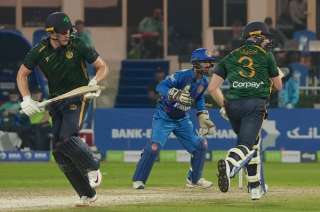
The History Press Ltd 2005
ISBN 1845885120
Price: £12.00
With a fascinating collection of vintage photographs, and stunning action shots from the modern era, Gerard Siggins tells the story of cricket in Ireland, from the earliest days up to the ICC Trophy final in July 2005.
It is the story of a sport buffeted by the enormous social and political changes of the last 200 years, with war, famine, revolution, independence, and economic boom and bust all impacting on Irish cricket. Ireland's cricket history is an extraordinarily colourful one; peopled by writers such as Joyce, Shaw and Beckett; statesmen such as the Duke of Wellington, Parnell, John Redmond and John Hume; and personalities such as Lady Gregory, Thomas Andrews and Colin Farrell. Gerard Siggins was born in Dublin in 1962.
He founded and edited Irish Cricket Magazine (1984-87) and has written on cricket since 1985 in various newspapers and magazines. He is a regular contributor to the CricketEurope website and other publications. He was president of Dublin University CC from 1992-97; for whom his senior career consisted of one match in 1988. He did not bat or bowl, but while fielding stopped one cracking drive by Brian Gilmore. He wishes he had more to say about his cricket career, but is more than happy with that.
This book includes over 100 top quality pictures of past and present. It is an interesting narrative on the history of cricket in Ireland.

IRISH cricket is on the up and, with almost perfect timing, a book telling the story of its first 213 years is on the bookshelves. As international cricket here prepares to go semi-professional, Green Days, Cricket in Ireland 1792-2005 will provide the definitive account of Cricket in Ireland Part One. It will never be the same again - certainly at the highest level.
The author is Ger Siggins, assistant editor of the Sunday Tribune, who is one of the best sources of cricket history on the island.
In his introduction he acknowledges the limited reference books but, rightly, says that "Irish cricket literature is thin on the ground". With Siggins' name on a book that spans more than two centuries, the early years were never going to be neglected. It makes for fascinating reading.
With only 128 A5 pages, it is remarkable how much is included. Nothing seems to have been missed and if there is repetition on the early days of cricket in Ulster for anyone who has read the much weightier tome by Clarence Hiles of senior cricket in the Province, it is more than compensated by the stories from the south.
The earliest match in Ireland whose details survive took place in the Fifteen Acres in the Phoenix Park in August 1792, hence the starting point for the book. The game was between an 11 of the Garrison and an All Ireland side including the Duke of Wellington. Remarkably, a copy of the scorecard of the match is the first of the superb pictorial coverage which enhances the publication.
As Siggins says in his first chapter, Rising in the Phoenix, cricket "is a sport that has been buffeted more than any other by the turbulent social and political winds of the last two centuries, but it has survived and thrived in several centres and now (it) stands at the brink of a breakthrough with qualification for the 2007 World Cup in the West Indies. How we got there is a remarkable story, and one brightly coloured by some remarkable characters." He tells it well.
The detail is impressive with a chapter devoted to the Gentlemen of Ireland's four tours to America between 1879 and 1909 and unveiled is a rival to the all-conquering Waringstown team of the 1970s and '80s and the North Down team of the 1930s as the strongest club side in Ireland, the Trinity team of the 1890s which included Lucius Gwynn, who turned down a Test cap for England because of examinations.
Later, the identity of Ireland's worst first class cricketer is revealed - and there seems little dispute - as well as the name of the 20th century Test cricketer to play for the Royal School Armagh.
On a personal note it was fascinating to read that the demise of the Press tent at North Down this summer, during Ireland's ICC Trophy game against Uganda, was not a first. During Ireland's game against Richie Benaud's Australians in 1961 "a gale-force wind ripped up the press tent, a marquee and several roof tiles". There are many anecdotal gems throughout the book and, in the words of the current National coach, "no stone is left unturned". The last chapter, in tribute to Ireland's "finest batsman" is entitled Rejoyce! and takes the story up to Ireland's World Cup qualification.
Invariably, though, a history book is out of date as soon as it is published but the measure of how far cricket in Ireland has come will soon rebut the following: "While for a time it was the most widely played sport in the country, the Irish have never been able to compete with England - indeed they have never had the chance to do so as equals on the field of play."




